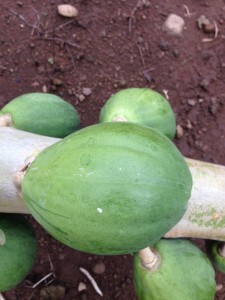Google Never Saved a Farm. a Scientist Did.
go.ncsu.edu/readext?380338
en Español / em Português
El inglés es el idioma de control de esta página. En la medida en que haya algún conflicto entre la traducción al inglés y la traducción, el inglés prevalece.
Al hacer clic en el enlace de traducción se activa un servicio de traducción gratuito para convertir la página al español. Al igual que con cualquier traducción por Internet, la conversión no es sensible al contexto y puede que no traduzca el texto en su significado original. NC State Extension no garantiza la exactitud del texto traducido. Por favor, tenga en cuenta que algunas aplicaciones y/o servicios pueden no funcionar como se espera cuando se traducen.
Português
Inglês é o idioma de controle desta página. Na medida que haja algum conflito entre o texto original em Inglês e a tradução, o Inglês prevalece.
Ao clicar no link de tradução, um serviço gratuito de tradução será ativado para converter a página para o Português. Como em qualquer tradução pela internet, a conversão não é sensivel ao contexto e pode não ocorrer a tradução para o significado orginal. O serviço de Extensão da Carolina do Norte (NC State Extension) não garante a exatidão do texto traduzido. Por favor, observe que algumas funções ou serviços podem não funcionar como esperado após a tradução.
English
English is the controlling language of this page. To the extent there is any conflict between the English text and the translation, English controls.
Clicking on the translation link activates a free translation service to convert the page to Spanish. As with any Internet translation, the conversion is not context-sensitive and may not translate the text to its original meaning. NC State Extension does not guarantee the accuracy of the translated text. Please note that some applications and/or services may not function as expected when translated.
Collapse ▲OCTOBER 12, 2015 BY HAWAIIFARMERSDAUGHTER
Why GMO?
So why do farmers need biotechnology?
If you look closely at the image above, you can see tiny rings on the skin of the papaya. It looks like no big deal but in reality it’s the most dreadful thing a farmer can find. It’s caused by a little bug called the leafhopper. It flies around fields and takes little tastes of plants only to infect it with the virus. One could spray for these critters but once a plant is bit, sprays are ineffective.
Beneath that healthy looking plant is a disease that slowly weakens the it over time. Many farmers would see these rings on their fruit and think nothing of chopping down a tree with lots of good looking fruit on it. These trees are loaded with papayas. It’s money sitting on those trunks. The leaves show no sign of disease so a threat doesn’t appear imminent.
As time goes on, the virus count starts to increase in the plant and the leaves eventually become mottled and disfigured which impairs photosynthesis. Photosynthesis is how a plant converts light into food. Impaired leaves can’t produced food for the plant. That affects the trees’ ability to produce fruits. As the disease progresses, fruits become more covered with the ringspot. The quality of the fruit also declines as a result. The papayas are unsaleable as a result of the virus.



